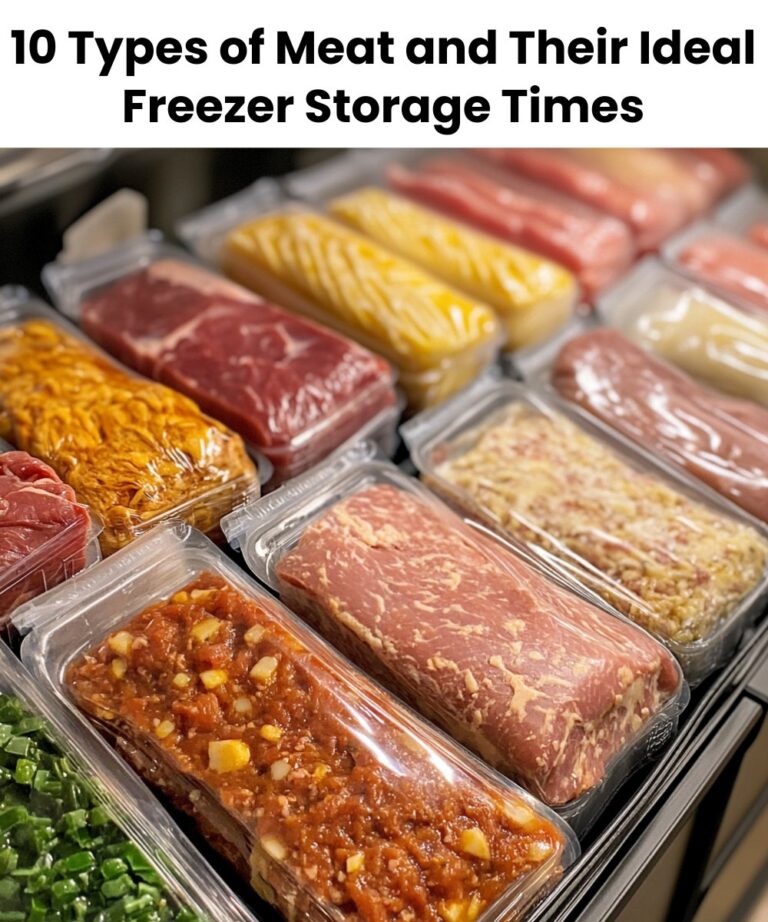ADVERTISEMENT
The shelf life of sausages varies depending on whether they’re cooked or uncooked. Storage Time: 1 to 2 months.
Best Practices: Wrap sausages in plastic wrap or use vacuum-sealed bags. If they are uncooked, be sure to use an airtight container or freezer bag to maintain freshness.
8. Lamb Chops
Lamb chops are tender and flavorful but need to be properly stored to retain their texture. Storage Time: 6 to 9 months.
Best Practices: Wrap the chops in wax paper and then place them in a freezer bag. The wax paper helps maintain the meat’s natural moisture and prevents ice crystals from forming on the surface.
9. Turkey
Turkey is often bought in bulk or as a whole bird during the holidays, so it’s essential to know its storage limits. Storage Time: Up to 1 year.
Best Practices: Keep the turkey in its original packaging if it’s vacuum-sealed. If not, rewrap it in heavy-duty aluminum foil and place it inside a larger freezer bag for extra protection. This method helps preserve its taste and texture for an extended period.
10. Fish Fillets
Fish is more delicate than other types of meat and can easily become freezer-burned if stored too long. Storage Time: 3 to 4 months.
Best Practices: Wrap each fillet tightly in plastic wrap or place it in a vacuum-sealed bag. The goal is to remove as much air as possible to prevent ice crystals from forming, which can alter the texture of the fish.
Tips for Proper Freezing and Storage
To ensure your frozen meats stay fresh and safe to eat, consider these best practices:
Label and Date: Always label and date your meat packages before placing them in the freezer. This helps you track storage times and avoid consuming meat that has been frozen for too long.
Use Freezer-Safe Packaging: Use freezer bags, aluminum foil, wax paper, or vacuum-sealed bags to protect your meats. Regular plastic bags may not provide adequate protection against freezer burn.
Organize Your Freezer: Place newer items behind older ones to ensure you use up meat within the recommended storage period.
Avoid Overcrowding: Allow for air circulation in the freezer by not overloading it. This helps maintain a consistent temperature and ensures even freezing of all items.
Why Proper Freezing Matters
Freezing meat for too long can negatively impact its taste, texture, and nutritional value. It can also lead to freezer burn, which happens when air comes into contact with the meat’s surface, drying it out and causing a change in flavor. While freezer-burned meat is still safe to eat, it may not taste as good.
Adhering to recommended freezer storage times and using proper packaging methods will ensure that your meats stay flavorful and nutritious, while reducing food waste. By following these guidelines, you can enjoy the convenience of frozen meat without sacrificing quality.
Conclusion
Understanding the freezer storage times for various types of meat is essential for maintaining food safety and preserving flavor and texture. Whether you’re freezing chicken, pork, beef, or fish, following the recommended guidelines will help you make the most out of your frozen foods. Properly stored meats not only taste better but are also safer to eat, giving you peace of mind when planning meals and managing your grocery budget.
ADVERTISEMENT
